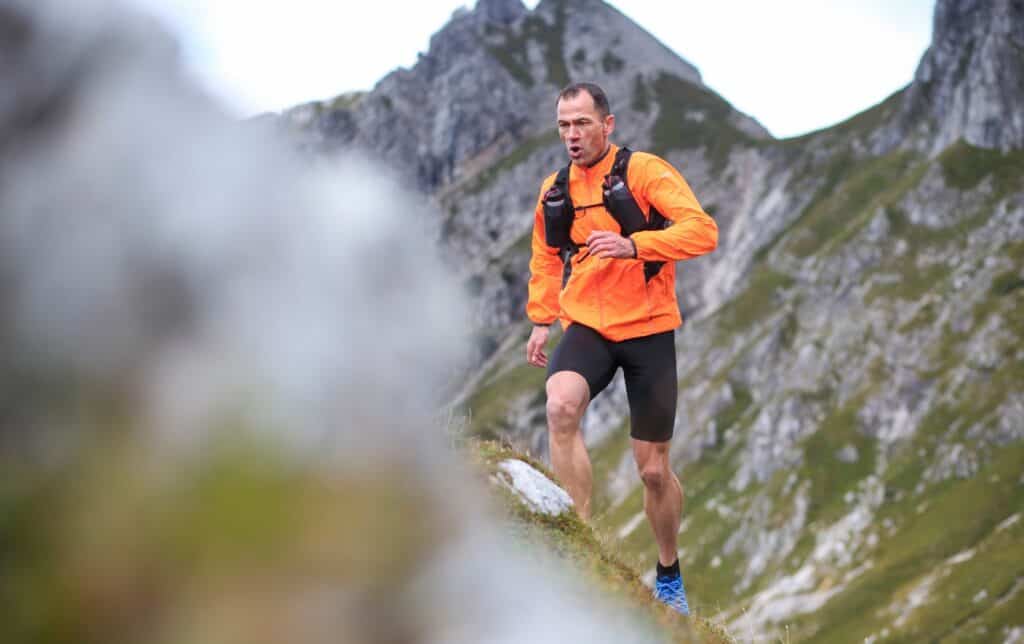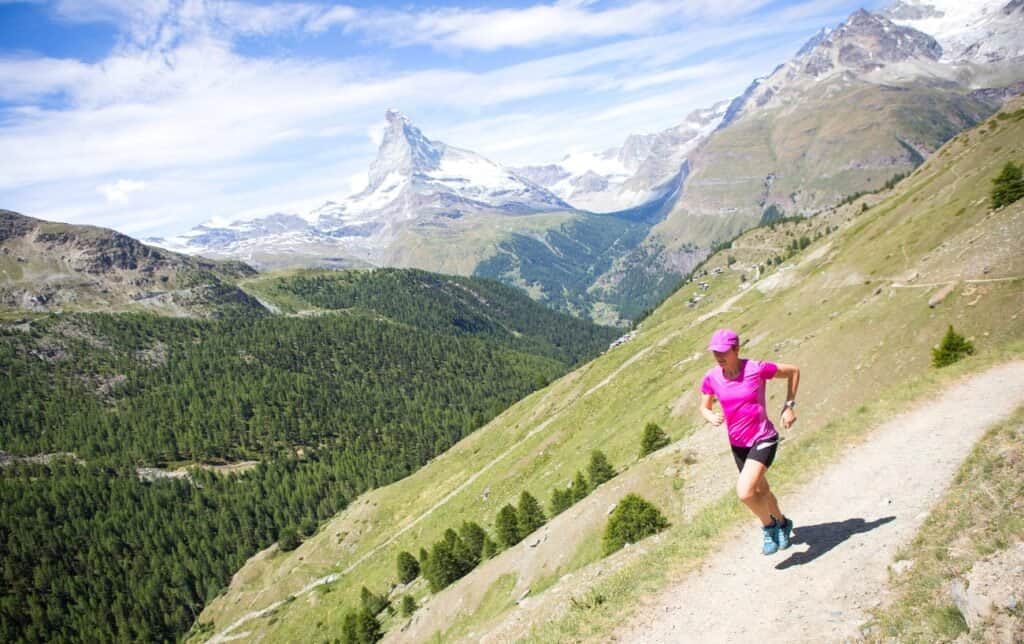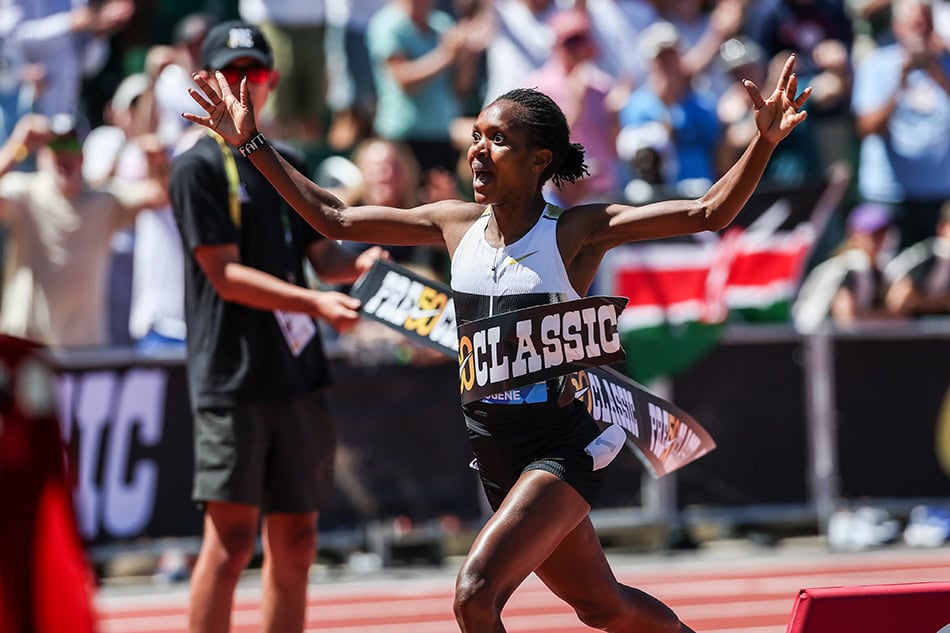One of the best things about the sport of running is that there are numerous types to suit runners’ personalities and training goals. Road runners can enjoy anything from a 5K or 10K to a half marathon or marathon or any odd distance in between.
Trail runners and cross-country racers enjoy off-road terrain, and ultrarunners tackle ultramarathon distances, typically in a trail race environment rather than road running.
Mountain running is a unique discipline that falls within the same Venn diagram as trail running, ultrarunning, and even road running, with intersections with each of these types of running.
For this reason, mountain runners share many of the same preferences and joys in their training and races that road runners, trail runners, and ultrarunners experience.
Thus, crossing over between road, trail, and mountain running is a great way to add variety to your usual running routine.
In this guide, we will discuss mountain running, how it differs from trail running and ultrarunning, how to get started, the best mountain running gear, and our best tips for mountain running training.

What Is Mountain Running?
Mountain running is a unique form of outdoor running that is primarily distinguished by any run that requires a significant change in elevation, namely running uphill.
Most mountain running is, by nature, trail runs or trail races, but there are also mountain running road races, such as the Mount Washington Road Race in the White Mountains in New Hampshire.
The main difference between mountain running and trail running is that mountain running can take place on roads and always involves elevation gains or losses, whereas trail running simply involves off-road terrain.
Both can have challenging, technical terrain, as many mountain trails are rocky and steep, but trail running can also occur on relatively flat or hilly routes that don’t have significant elevation gain or altitude changes.
The main difference between road running and mountain running is that, again, mountain running climbs mountains while road races can be flat, and most mountain races take place on mountain trails rather than paved roads.
Finally, the difference between mountain running vs ultrarunning is that ultra races are defined by being longer than the marathon distance of 26.2 miles.
Mountain running races can be any distance.

For example, the Mountain Running World Championships1Home. (n.d.). Wmra.ch. Retrieved March 5, 2024, from https://wmra.ch/ include a vertical kilometer race, which is usually about 6-8 km long, but with an elevation gain of 1 km!
There are also plenty of long-distance mountain running races, but the distance is not what distinguishes mountain running from other running races—it is the fact that you are running up a mountain (and possibly back down).
Therefore, mountain running can only occur in areas with mountains. Popular areas for sky running races and mountain running championships and races include Colorado and the Rocky Mountains, the Alps, and the Pyrenees.
The World Mountain Running Association (WMRA) has a mountain racing calendar22024. (n.d.). Wmra.ch. Retrieved March 5, 2024, from https://wmra.ch/calendar/2024-major-events and organizes the World Mountain and Trail Running Championships.
Although the World Mountain and Trail Running Championships do not necessarily have the widespread clout of the Olympic Games, it is still an event that ultrarunners and trail runners hold with high regard.
The World Mountain and Trail Running Championships is a relatively new format in that the mountain running and trail running world championships are held together at one site.
This format of combined races kicked off in 2021 in Chiang Mai, Thailand, and is currently held every other year.
The 2025 World Mountain and Trail Running Championships (WMTRC) will take place in the Aragón region of Spain. About 1,700 mountain and trail runners from 70 countries are expected to participate.

What Running Gear Do You Need for Mountain Running?
Mountain running gear is typically similar to trail running gear since the majority of mountain running takes place on off-road mountain trails.
Here are some of the essential pieces of running gear for mountain racing and training:
- Trail running shoes (unless you are doing a road running mountain run)
- Potentially YakTrax, running shoes with spikes, or crampons if you will be running on snow or ice
- Hydration pack or running vest with a hydration bladder
- Handheld water bottle or hydration belt for shorter mountain training runs
- Lightweight layers, especially if you do sky or mountain running at altitude or with significant elevation gain or loss. You will want to be able to add a running jacket, hat, running pants or tights, and gloves near the mountain summit as temperatures drop.
- Trekking poles
- First-aid kit
- Safety gear such as satellite radio, GPS or map for navigation, and bear whistle
- A GPS running watch and heart rate monitor are helpful to keep track of your training and workout intensity
- If you are going to be doing multi-day mountain running treks, you will need additional gear such as a sleeping bag, cooking stove, and fast-packing tent or shelter.

How Do You Prepare for a Mountain Running Training Session?
One key difference between heading out the door for a regular trail run or road run and a mountain run is that you need to be prepared for the technical terrain, elevation gains, and potential changes in weather conditions on mountain trails.
Make sure always to check the weather forecast, including conditions at the summit, if you are going to be running from the base of the mountain.
This will help you determine what to wear for mountain running and what extra running gear to bring in your running pack, such as a waterproof rain jacket, extra socks, and gloves.
Ensure that you have proper navigation aids, such as a map, compass, and GPS running watch or device.
The GPS signal may not be reliable if there is significant cloud cover or tree cover on trails, which is why it is always good to have a backup with a paper map or downloaded map of the mountain trail on your phone.
Hydration and fueling are also important. You will need to carry a running hydration pack. If you are doing a long-distance mountain running training run or race, a water filtration system for purifying stream water can also be helpful.
Beginners, in particular, should try to run with a mountain running group or running buddy so that you are not tackling technical trails in the mountains on your own.
You may twist an ankle or otherwise get injured, and having an experienced mountain runner or trail runner with you can provide assistance and help you with mountain running technique, pacing, and navigating the mountain trails.

What Is the Best Mountain Running Technique?
The rocks, roots, boulders, and uneven terrain with any type of trail running require you to use some specific running form or technique adjustments compared to road running on smooth pavement or a treadmill.
These trail running technique differences are magnified when you focus on the hallmark inclines and declines with mountain terrain.
Running uphill requires muscular power and strength (especially in the glutes, hips, hamstrings, quads, and calves), aerobic endurance, and cardiovascular fitness.
Particularly when running up steep, narrow, or technical climbs, your running stride and technique may more closely resemble power hiking rather than “running.”
In fact, even the best professional trail runners, ultrarunners, and mountain runners typically power hike some ascents during mountain running races.
Switching to a power hiking gait can actually conserve energy, lower your heart rate, and help you cover ground faster when the gradient is too steep or the technical terrain and footing make maintaining a running effort challenging.
Most ultrarunning coaches highly recommend running with poles to help navigate steep uphills and downhills, which are characteristic of any mountain race or mountain running training workout.
When you do run uphill, shorten your stride and lean slightly into the hill from your ankles rather than your hips.
Keep your chest up to ensure your running posture isn’t compromising your full working lung capacity on challenging mountain passes!
Increase your cadence, particularly on rocky or technical mountain trails, so that your steps are short, quick, and light.
Use your running poles to aid balance, offset some of the workload from your quads and legs to your upper body, and help you power up steep climbs.

Mountain Running Tips for Beginners
Here are some mountain running tips for beginners:
#1: Focus on Time Not Mileage
Given the challenges of mountain terrain and the elevation gain, it’s often more effective to focus on the “time on your feet” or “moving time” rather than the number of miles you run.
Build up gradually to prevent excessive muscle soreness.
#2: Wear a Heart Rate Monitor
Because running pace is less important or reliable, use a heart rate monitor to gauge the intensity of your workout.
#3: Strength Train
Strength training with exercises like squats, lunges, step-ups, and planks can help strengthen your muscles for the demands of mountain running.
#4: Use Proper Trail Etiquette
Don’t litter, don’t hog the trail if others are passing, stay on the trails to avoid erosion, yield to runners coming up the trail if you are going down the trail, and be polite and friendly to other runners, walkers, and hikers you may see.
Overall, mountain running is a fantastic way to get outside and enjoy the trails while getting a great cardiovascular and muscle-strengthening workout!
If you want to dominate your uphill running technique, check out this next guide:












